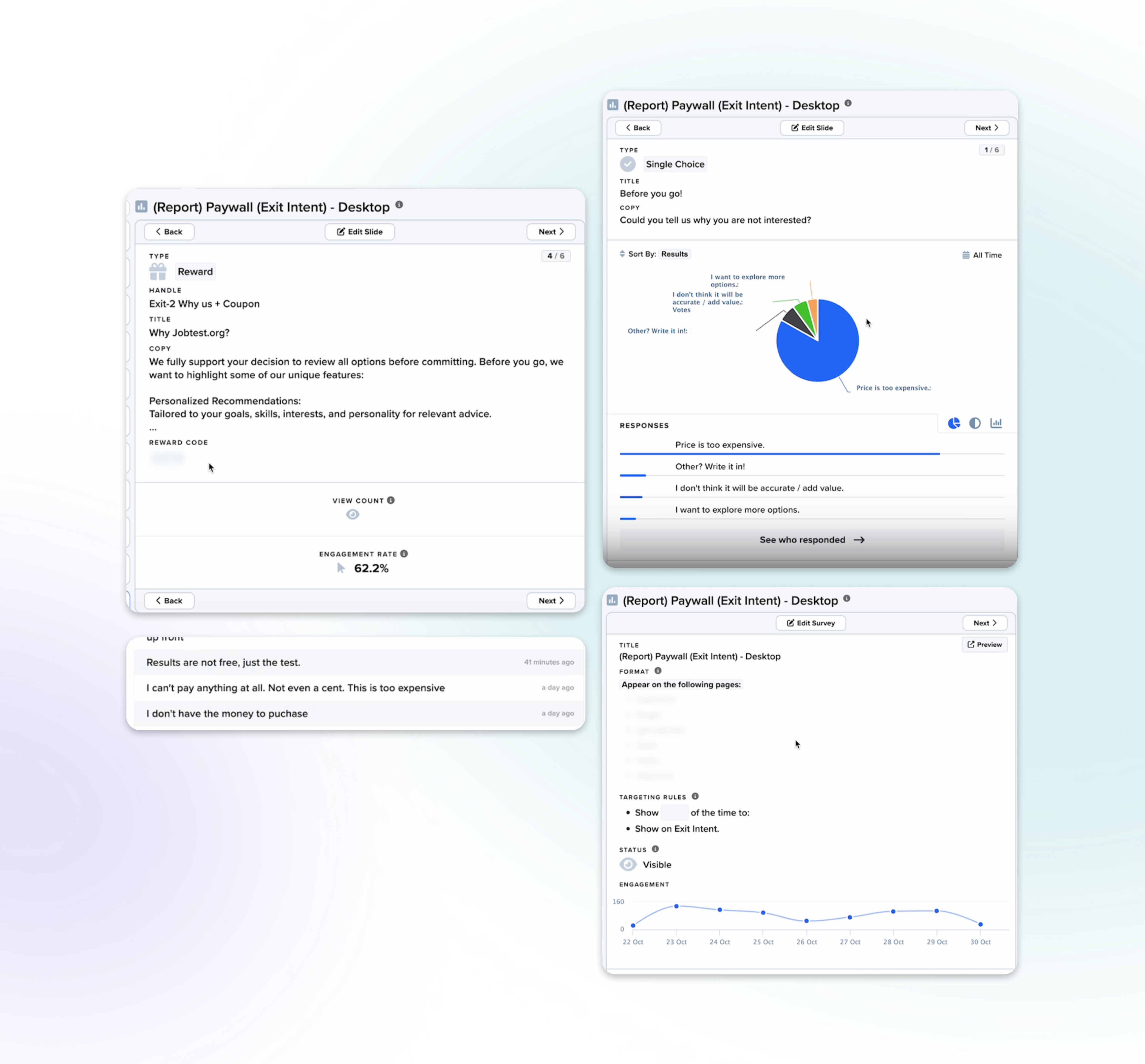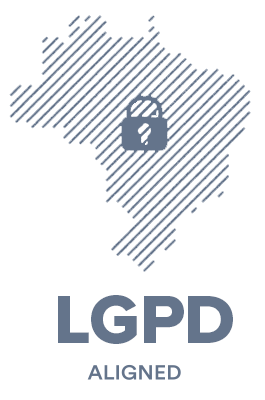How one SaaS founder uses Zigpoll survey data to model virality and automate conditional workflows
Jobtest is a SaaS company helping jobseekers find their dream career. They offer diagnostic career quizzes for a fee while also connecting jobseekers directly with career coaches.
To date, they have served over 400,000 customers, and we had to reach out to their CEO Brian Cho after seeing that they had collected over 117,000 survey responses in the last year.
Here’s what we learned during our conversation with him:
- Jobtest uses open-ended question responses to trigger for conditional workflows that lift conversion rates by ~8%
- They launch new data collection flows on Zigpoll quickly to collect feedback, then only bring it inhouse if the data demonstrates ROI
- They spend $250,000+ monthly on paid ads, NPS is used to measure virality and model acceptable CAC

Why Zigpoll
The Jobtest team is strong enough to build their own survey solution - but it would cost them weeks of development and maintenance time that would take away from the core roadmap:
“When we first chose Zigpoll we had limited dev resources. So we needed a no code solution that's super easy to use. We could probably build out our solution, but that's going to cost us weeks worth of work.”
He also appreciates the fixed costing of Zigpoll - where increases in the volume of survey responses don’t scale his SaaS costs:
“Zigpoll is a fixed fee that we pay on a monthly basis that is less than what the dev resources would have costed us.”
Using open ended questions to trigger conditional workflows that lift conversion rates
Survey Type: Exit Intent
One of the most important flows for Jobtest is after users complete a career quiz. The results of this quiz are locked behind a paywall where Jobtest was seeing high dropoffs.
Brian wanted to gain a better understanding of the reasons behind these dropoffs, and implemented multiple choice and open-ended surveys to surface why.
One interesting workflow - having this data available allows Jobtest to share coupon codes to customers who express that “price” is an issue in open-ended answers.
“I use those as a conditional element to objection handle. If I detect ‘price’ in the open ended answer, I conditionally send them to a specified path that tells them “hey, we understand the pricing is a little too expensive. Here's a coupon code if you want to use it.”
Brian shared that this workflow has improved conversion rates on the paywall by ~8%!
Takeaway - exit intent surveys on purchase pages can be an effective tool to diagnose high bounce rates and power flows that improve conversion.

Using Zigpoll to quickly launch data collection flows, bringing them in house if they drive ROI
Survey Type: Emailed NPS Surveys
Another key element of the Jobtest user journey occurs after their customers have a coaching session with one of Jobtest’s 40 coaches.
Providing these coaches with direct user feedback is critical for improving the overall Jobtest experience.
Jobtest uses Zigpoll to survey their customers after each coaching session, asking them to share feedback with the question: “What could we do differently to enhance your experience with us?”
They then send summarized feedback to each individual coach - allowing them to improve the overall service offering.
Brian shared that this workflow was extremely easy to setup on Zigpoll, allowing them to validate the importance of collecting this feedback quickly:
“Zigpoll is a very quick and dirty way of testing something and seeing whether it's going to stick. If it does, then we try to internalize it to develop a full solution for that.“
After running this test for a few months - his team is now planning to integrate feedback collection into their own product after proving it can drive positive ROI.
Takeaway - Use Zigpoll to quickly launch feedback initiatives. If the data is valuable enough - invest to bring it inhouse and build a custom solution.

Collecting NPS to measure virality and model acceptable CAC on 7-figures of paid ad spend
Brian shared that Jobtest spends between $250,000 to $500,000 on paid ads every single month.
When you manage that level of ad spend, it’s critical to model what a profitable level of CAC would be.
He collects NPS using Zigpoll’s NPS surveys, and he described his approach to modeling CAC as follows:
- NPS is a proxy for k-factor (a measurement of virality)
- A high NPS = higher percentage of organic referrals and traffic coming in. If customers refer other paying customers, they’re worth more. So…
- Map out the expected value of customers and the customers they refer assuming you can maintain a certain NPS score. “5% of customers refer if we maintain a 70 NPS”
- Use that estimate of expected LTV to inform how much they’re willing to spend to acquire customers
“We have seen that when we maintain an NPS score of 70, we had a referral client base of 5%.
So we can map that and say okay, every single customer that we bring in, we are willing to pay an additional 5% because we know they're going to have a K factor of 0.05.”



